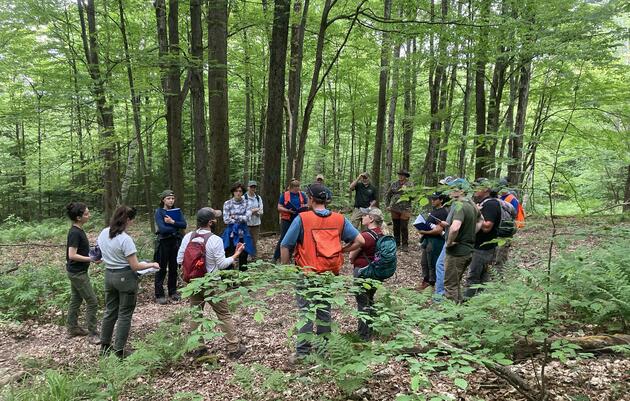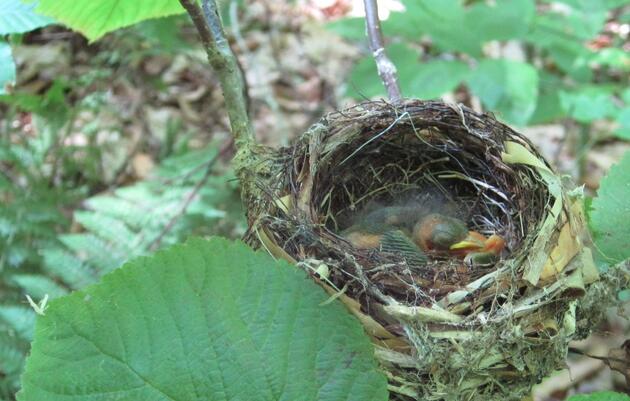“Can you talk about the dramatic disturbance happening on this hill?” asks an attendee of Ethan Tapper’s forest walk, pointing to a sloped area where multiple large trees have fallen over, their giant root systems unearthed.
“Yeah, I love it!” responds Ethan, garnering a laugh from the crowd. He’s grinning ear-to-ear, but he is quite serious. “Humans have this innate preference for neatness, which has nothing to do with how healthy forests actually look. Creating healthy forests requires us to get a little uncomfortable, because sometimes we need to make forests ‘messier’ to make them healthier.”
Ethan is one of Audubon’s first-ever endorsed foresters, and a Bird-Friendly Maple producer. He is hosting this forest walk on the Columbia Land Conservancy’s Schor property as a promotional event for his newly-published book, How to Love a Forest.
His book – and the walk he is leading – are inspired by his work and personal experience working as a forester in Vermont and caring for his own 175-acre forest – a place he has named “Bear Island.”
“My forest had every problem that a forest could have," said Ethan. "I had to ask myself: would it be a greater act of love to leave it to suffer alone, or do everything in my power to make it healthy again?”
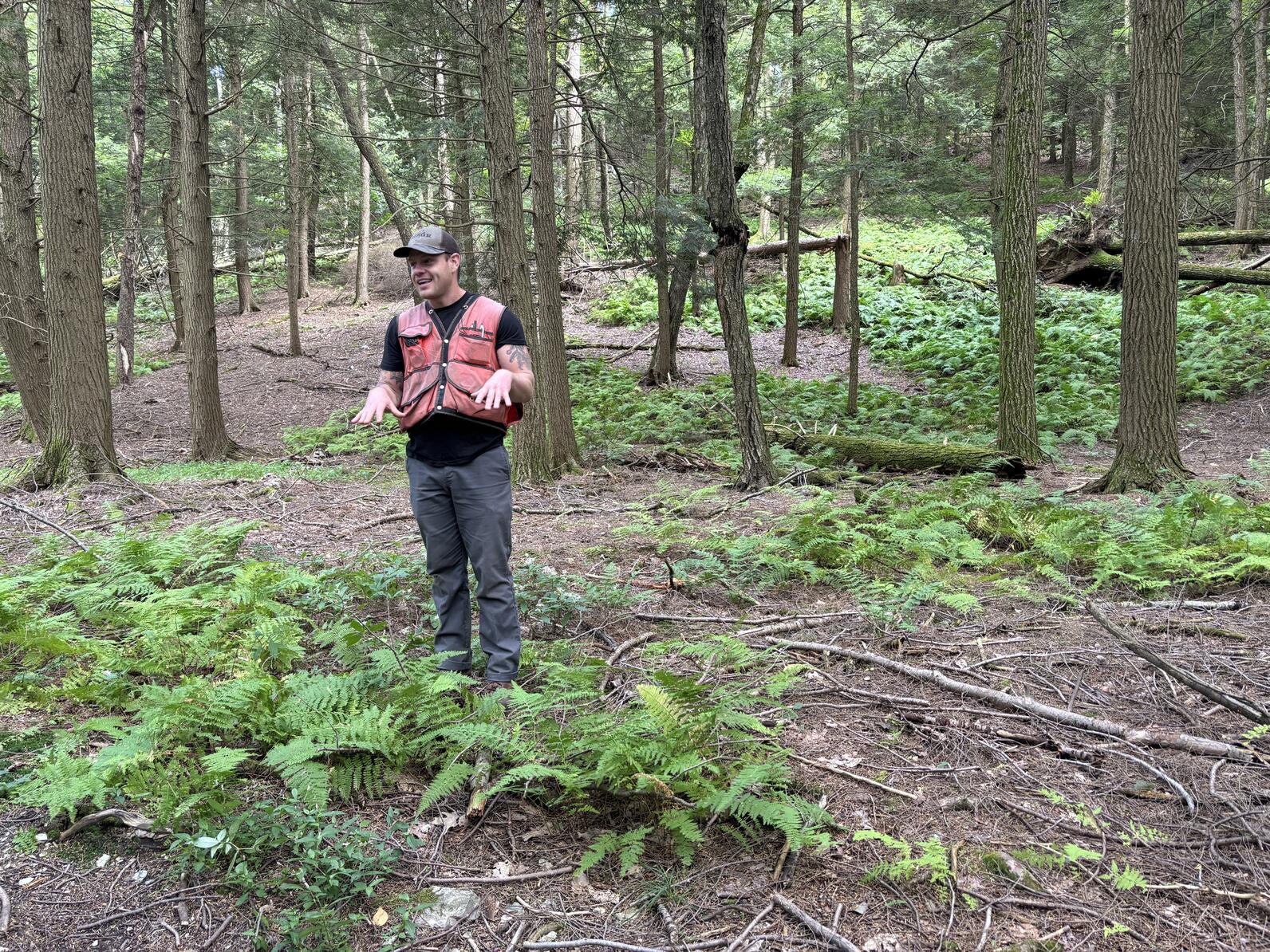
Ethan chose to be proactive, and hopes to help landowners and forest lovers see that “the greatest expression of compassion” for impacted forests (often caused by a history of human activity) isn’t always to just let nature take its course, but rather to take action: to help forests recover from the wounds of the past and to build resilience as they move into an uncertain future.
Want to work with an Audubon-endorsed forester, or become one? See Vermont’s growing list of endorsed foresters, as well as program requirements for participating foresters in CT and NY here.
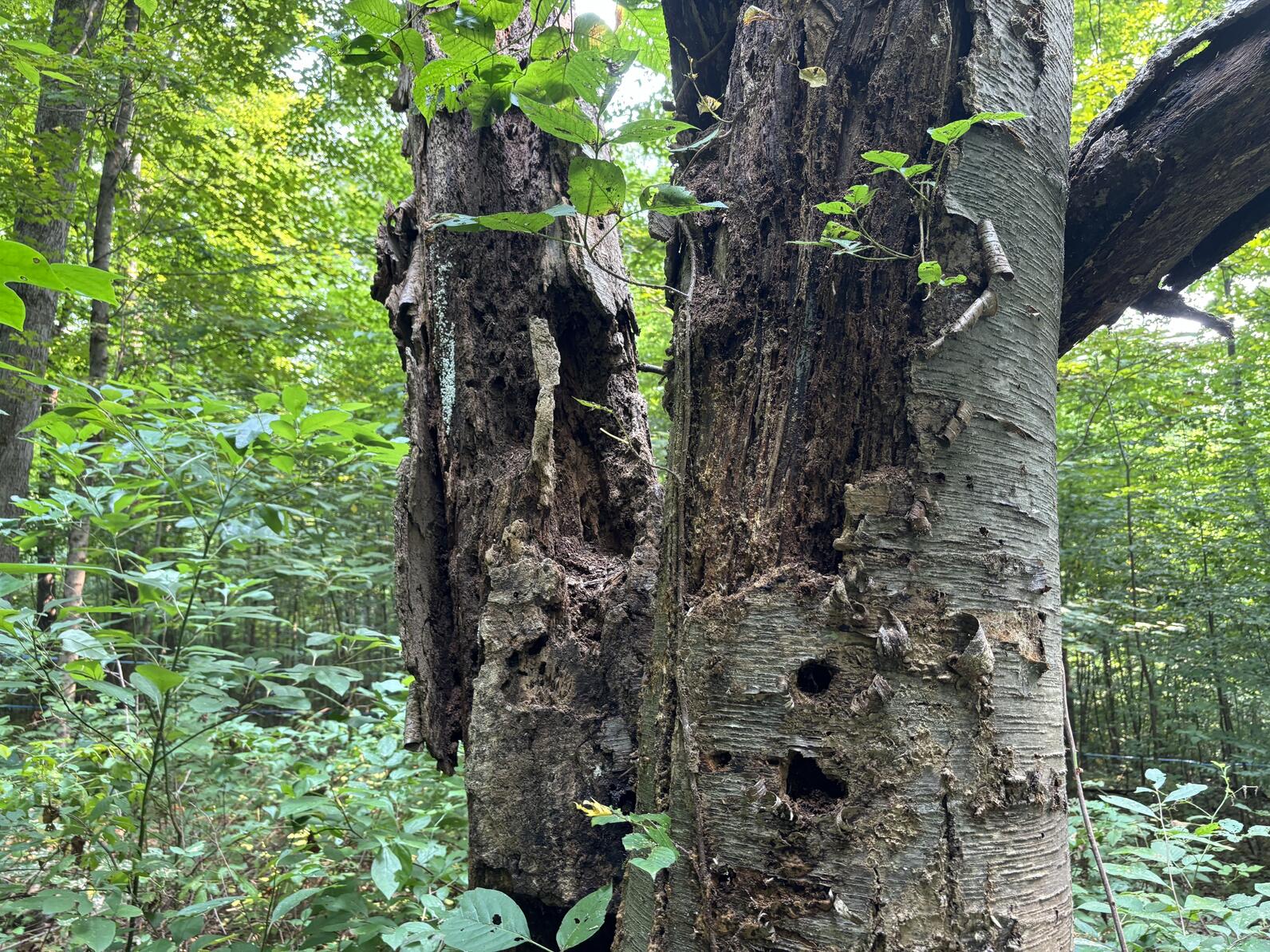
As we travel through the woods, Ethan points out a dying, standing tree, full of holes. “Foresters are always geeking out about death,” he jokes, kind of. “Making forests healthier and more full of life can mean embracing the profound and beautiful process of tree mortality – that can mean cutting trees, or letting a dying tree stand until it falls to the ground, where we should let it stay.”
“This dying tree is providing incredible value for wildlife. You’ve got nesting cavities for owls, wood ducks, flying squirrels, and a complex bark structure supporting mosses and lichen and invertebrates.”
When he isn’t geeking out about death, Ethan is geeking out about birds.
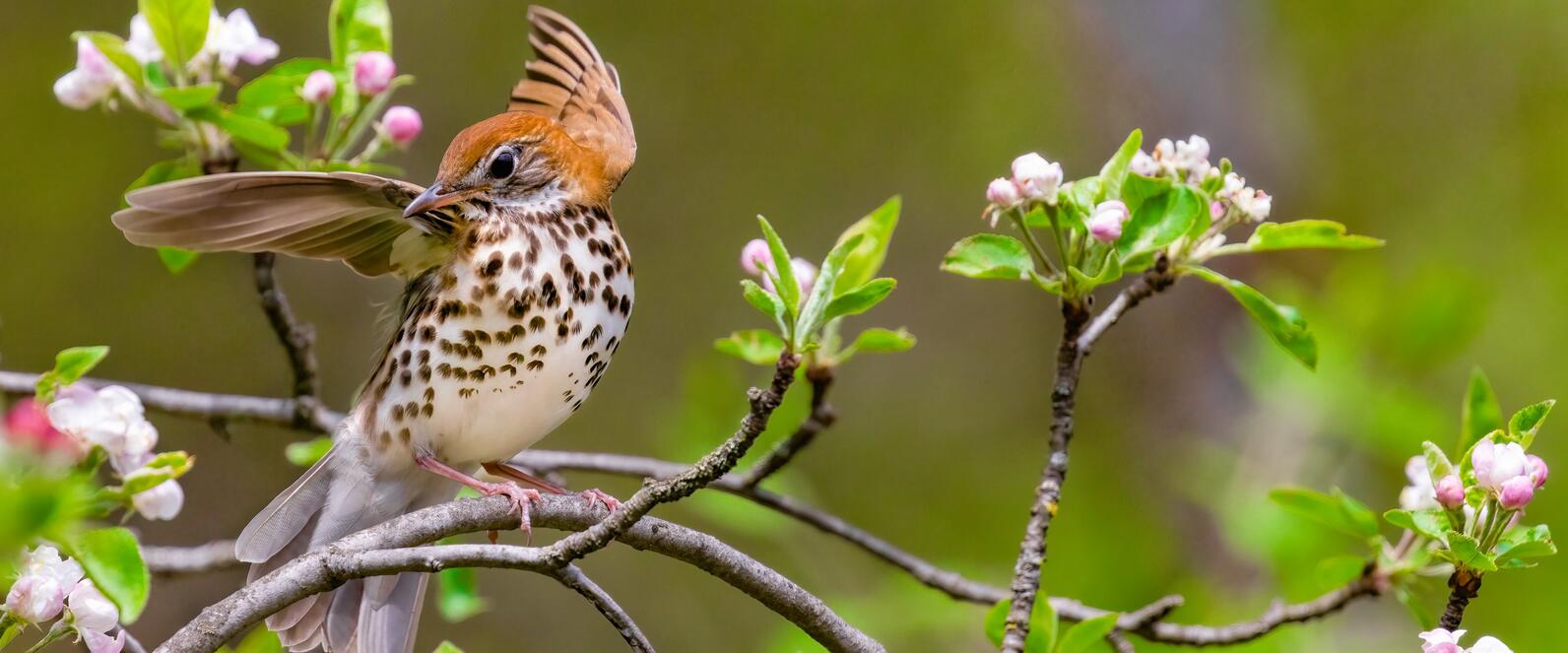
“People love seeing me freak out over a bird,” he laughs. “Birds are actually a great communication tool. I did a big forest management project at the Catamount Community Forest in Vermont where we marked and cut a lot of trees - I wanted the public to understand what they were seeing and how it was so positive for all the forest’s bird species. Explaining the value of forest management in terms of birds is a great way to help people who may be skeptical of forest management see how incredibly valuable it can be to our forests and the biodiversity that they support.”
“I invited the public out on wildlife walks and birding walks, and they were hugely successful. We talked about how most of today’s forests don’t have many of the attributes that defined forests on this landscape for millennia: among them, big trees, different canopy layers, and dead wood on the ground. All of these things are essential habitat for critters from birds to bears to butterflies. Creating more diverse forests can help us protect the long-term resilience, vibrance, habitat and value of our forests.” Working on this project turned Ethan into a full-fledged birder, a label he now wears with pride.
“When you see a tree that I’ve marked to be cut, it’s important to me that people understand that I cut trees not because I don’t love the forest,” Ethan tells the crowd on his current woods walk. “It’s because I love the forest so much that I’m willing to take these incredibly bittersweet actions to make it healthy again.”
“I have three goals with every single management plan I write,” he explains: “Make the forest more resilient, make it more diverse, make it richer with habitat for all of our native biodiversity.”

